Kyrgyzstan Travel
-
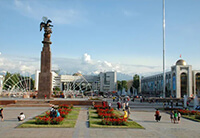
Bishkek
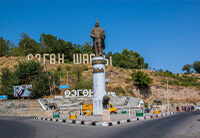
Uzgen
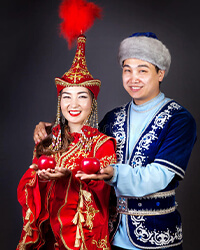
National
dress -
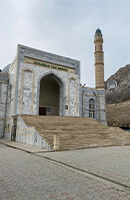
Osh
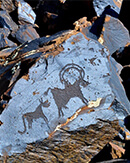
Saimaluu
Tash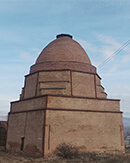
Shah
Fazil -
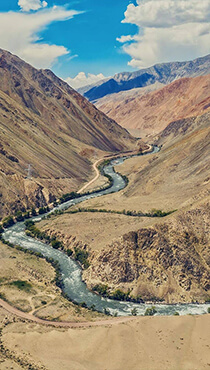
Suusamyr
valley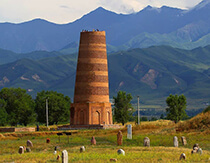
Burana
Tower -
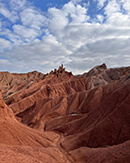
Fairy Tale
Canyon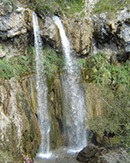
Arslanbob
festival tours -
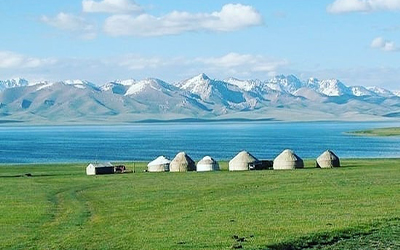
Karakol
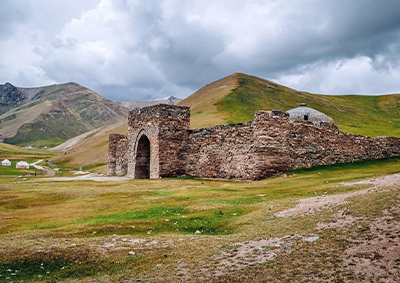
Tash Rabat
-
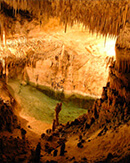
Chil-Ustun
Caveadventure tours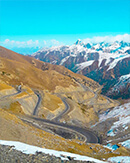
Alai
Valley -
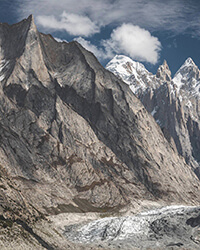
Tien Shan
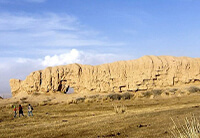
Koshoy
Korgon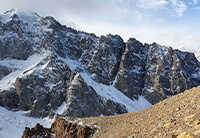
Ala
Archa -
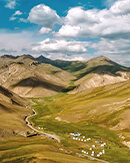
Torugart
Pass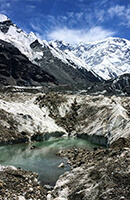
Engilchek
glacier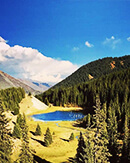
Issyk kul
-
historical tour
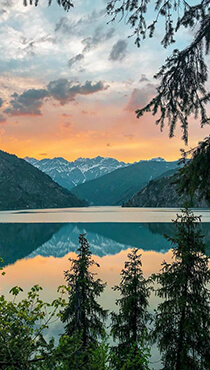
Sary
Chelek -
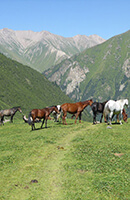
Kyrgyz
horses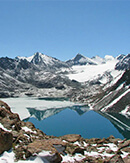
Merzbacher
Lake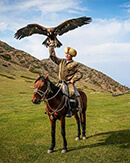
Hunting
with birds
Kyrgyzstan
What Switzerland is to Europe, Kyrgyzstan is to Asia. There is a reason why it is said that way. Tian Shan covers more than 80% of the country and the rest is made up of valleys and basins. This makes the country a homeland of mountains, valleys, steppes, meadows, forests and a little bit of deserts.
Kazakhstan, China, Tajikistan and Uzbekistan cover the four side of the country. It is far from the sea and all its rivers flow into closed drainage systems, which do not reach the sea. If you are a nature lover, it is a must see place. Because you will fall in love with the nature of this country tucked away in the most beautiful place in the world
The country has shown great developments in the field of tourism in recent years. Although it does not have a coastline, lake tourism is carried out in summer seasons, and because the country is covered with mountains, tourism related to winter sports is developing. After winter sports, nature trips and thermal tourism are made. Another feature of the country that attracts tourists is that it is the owner of many forests and Issyk Kul.
History
The Scythians were the first in the history of the land in present-day Kyrgyzstan. The Kyrgyz state reached its greatest expansion after defeating the Uyghur Khanate in 840 AD. From the 10th century, the Kyrgyz migrated as far as the Tian Shan range and maintained their dominance over this territory for about 200 years.
They became a part of the Mongol Empire in 1207. Kyrgyz tribes are overran by the Manchurian Qing dynasty in the mid-18th century and by the Uzbek Khanate of Kokand in the early 19th century. Then their land is conquered by Russians and became the part of Soviet Union until their independence.


Epic of Manas
The Manas epic is about the fight of the mythical Kyrgyz folk hero Manas and his companions and descendants in the 9th century against the Uyghurs and is the most important work of classical Kyrgyz literature as well as one of the most important works of the Turkic peoples.
The work comprises almost 500,000 verses, which is twenty times as long as Homer's Odyssey and Iliad put together. Passed on orally for many generations by minstrels, highly respected folk singers, in melodic oratory.
Today at least 65 different printed versions of the work or parts of it exist. A new translation of the complete works into English by Walter May was published in 1995 for the supposed thousandth anniversary of the birth of Manas and reprinted in two volumes in 2004.
Jusufu Mamai, sometimes referred to as living Homer, only combined various parts of the epic (Manas, Semetey and Seytek) into a single work in the 20th century, which has still not been completed. The Epic of Manas is divided into three books. The first is entitled "Manas" the second episode describes the deeds of his son Semetei, and the third of his grandson Seitek. Together with Semetei and Seitek, Manas was included in the 2013 Representative List of the Intangible Cultural Heritage of Humanity by UNESCO as the “Kyrgyz Epic Trilogy”.
There are also parallels to the Oghuz Kagan epic (also written down by Wilhelm Radloff in 1891 with the Kutadgu Bilig), Dede Korkut and Georogly. Often the characters and or certain actions are very similar. The central figure of the epic, rich in figures is Manas, a batyr (brave man), who excelled in the creation of a united state of the Kyrgyz people. Forty brave knights were under his leadership. Already at the age of nine Manas protected his people from Kalmyk invaders and defeated Kara-Kitais.
The hero Manas is said to be born in the Ala-Too Mountains in the Talas region in north-western Kyrgyzstan. A mausoleum a few kilometres east of the city of Talas is said to contain his remains and is a popular excursion and festival site, where impressive Kyrgyz equestrian games have been staged since 1995. However, one of the facade inscriptions states that the mausoleum is dedicated to "the most glorious of women, Kenizek-Khatun, the daughter of the Emir Abuka". Legend has it that Kanikey, the widow of Manas, ordered this inscription to mislead her husband's enemies and prevent the tomb from being desecrated. The building, known as "Manastin Khumbuzu" was probably built in 1334. Nearby is a museum dedicated to Manas and his legend.


Hunting with wild birds
Hunting with wild birds is an ancient tradition in Kyrgyzstan like many other nations in Central Asia. Kyrgyz nomads used eagles for hunting because they considered eagles more powerful and professional. However, in our days it is very rare to come across with eagle employing. Hawk and falcon employing is more usual in Kyrgyzstan now. Nevertheless, Kyrgyzstan still has a number of expert hunters that train and use golden eagles to this day who are determined to keep this ancient practice alive.
The man who training eagles and hunting with eagles is called Berkutchi. Berkutchi have to spend 3-4 years training golden eagle to make hunt successful. After training, golden eagles can be used for hunting more than a decade. Training golden eagles is not easy and requires much patience. Firstly, the eagle wears a leather hood during the day to increase its dependence on the trainer. The berkutchi will often talk and sing to the eagle to train it to listen only to his voice. He is also the only one that feeds it, creating a strong bond between the eagle and the berkutchi. The art of eagle training is often passed down orally from father to son.
By the time, Alexander the Great conquered Central Asia (in the 4th century BC), place was already a large, well-fortified city. By the way, it was here, near the city walls, that Alexander the Great was wounded for the first time. Then, by order of Alexander, due to frequent uprisings of the local population, the city was destroyed.
Berkutchi wears a heavy leather glove not to be injured by sharp nails of the eagle and will not take the hood off unless eagle sees an animal running across a meadow. When he removes the hood, the eagle quickly leaps from its master's arm and attacks its prey. Prey can be anything such as rabbit, fox and even young wolf. Eagle is trained to wait for its master; the eagle will not begin eating until the berkutchi comes. The eagle only eats a portion of the hunt. Master uses the rest of the meat and the animal pelt.
During the years of Arab rule, Islamic architectural structures of portal-domed structures appeared - mosques, madrasahs, mausoleums, minarets. The rapid development of Istaravshan is associated with the reign of the Samanid dynasty (9-10 centuries). The representatives of this dynasty were the first ethnic people who are now the progenitor of modern Tajiks.
Hunting has always been and remains one of the favourite hobbies of tourists. Tours are available that include visits to local hunters who can explain more of the intricacies of training and hunting with these magnificent birds of prey. It is a fantastic way for travellers interested in learning more about traditional Kyrgyz bird hunting.


Horseback riding
Kyrgyzstan, 90% of the country is covered in mountains with smatterings of clear alpine lakes either relaxing on high mountaintops or encompassed by them. Taking a trip to Kyrgyzstan means stepping into one of the most glorious, pristine mountain settings in Asia. There are more than 2,000 lakes in Kyrgyzstan, but 16 of them are substantial. Kyrgyzstan is not only the country of mountains and lakes but also of horses. According to Kyrgyz proverb, it is said ‘horses are the wings of Kyrgyz people’. Horses are significant part of Kyrgyz nomadic culture.
Horseback riding is the best way to explore the virgin beauty of the landscape that is largely untouched by civilization and the entire country is a remarkable sight, not just a series of beautiful places with lacklustre stretches in between.
Kyrgyz horses are sure-footed, strong, and known for their endurance and used to traipsing through the mountains of Kyrgyzstan. Whether you are an expert or novice, a horseback riding holiday is Kyrgyzstan is secure. Just grab a camera and choose where you would like to go. Horseback excursions can be arranged for as little as a couple hours to a couple weeks. Do not miss your chance to explore this beautiful, mountainous paradise.


Territory & Nature
The mountainous landlocked Republic of Kyrgyzstan has a land area of 199,951 km² and around 6.5 million inhabitants. The country borders in the southeast with China, in the north with Kazakhstan, in the southwest with Tajikistan and in the northwest with Uzbekistan. The Kyrgyz territory includes four Uzbek enclaves as well as two Tajik enclaves.
Kyrgyzstan is located in the high mountains of the Tianshan and reaches the highest altitude with the 7439 m high Jengish Chokusu. Over 90% of the territory is above 1500 meters above sea level, 94% of the land area is mountainous, and farming is only possible on 20% of the area. Geologically, the Tianshan is a young mountain range (Cenozoic), which is why the mountains in Kyrgyzstan rise dominantly and ruggedly and deeply cut into valleys. The southern end of the country is formed by the Alai mountain range, where it merges into the Pamir Mountains.
Up to an altitude of 1500 m, the land consists of steppe, which, however, has been made arable through extensive irrigation systems. From 1500 m, alpine meadows and pastures dominate, which reach up to the snowfields and glaciers. The forests are located at altitudes of 1500 to 4000 m above sea level and are home to around 120 species of trees and shrubs. With only 4% forest area, Kyrgyzstan is one of the least forested countries in Asia, but the Jalalabat region has the largest walnut forest in the world.
Kyrgyzstan’s climate is ranging from dry continental to polar in high the Tien Shan Mountains to subtropical in the southwest to temperate in northern foothill zone. There are sharp local variations between mountain valleys and flatlands. Precipitation also varies greatly from western mountains to north-central region.
Hot and cold have great extremes on a daily and yearly basis. It is cold as Siberia in the winter and quite hot in the summer. In the mountains, daytime and night time temperature can be differ 50 degrees in °C. That is why Kyrgyzstan is “the land of the fan and the fur”. These temperature extremes are common in Central Asia. Kyrgyzstan is also very windy and foggy.
In winter, Siberian winds can send the temperature plummeting to - 30 degrees °C in the high elevations. The winter is harsh in the mountains but tolerable in Bishkek and the Lake Issyk-Kul area. Much of country is under the snow carpet. The snow on the ground tends to be icy and crusty. In the mountains, snow can accumulate to great depths.
The summer is hot and characterized by great extremes during the night and day time. Temperatures often rises above 32 degrees °C or even 37 degrees °C during the afternoon and then sometimes drop into the 40s at night. Spring and autumn are pleasant and the best time to visit. Spring can be rainy, muddy and windy. Temperatures and weather conditions are also greatly influenced by elevations. The mountains and highlands obviously are colder than the lowlands.


Kyzgyzstan Travel Seasons
You can visit Kyrgyzstan all year round depending on your travel plans and ideas. However, summer is the tourist high season. Best time to visit is July and August the highlights of Kyrgyzstan definitely include going to the mountains and lakes. Pastures are full of yurts, fruits and vegetables are ripe, and the weather is warm in summer. Day hikes or do multi-day trekking or mountain biking are ideal activities for this season. Much of Kyrgyz people are semi-nomads and they go to mountain summer pastures during school holidays, which lasts, from the end of May to the beginning of September. They set up several yurts and families take their kids and grandkids with them. Some yurts are served for tourists.
In the high altitudes, the temperature can cool down quickly at night and you will need to bring jacket even in summer. If you are not planning to go to altitudes above 2000 meters, it can be very hot in summer. Cities like Bishkek and Osh situated at an altitude of around 900 meters above sea level can have temperatures above 40°C. Because of heavy snow, some roads are closed in winter. However, in mountains are cold and snowy, which is perfect for skiing. Kyrgyzstan has several skiing places with lifts and offers great opportunities for a free ride.
Spring and fall season is not the best time to be in Kyrgyzstan. In spring, the snow begins to disappear from the ski slopes, but the high passes are still covered, and it is severely limiting your trekking options. The winter ski places are closed and the shepherd yurts of pastures are only set up in July and August.
Cloudy
Rainy
Rainy
Windy
Sunny
Windy
Warm
Rainy
Sunny
Hot
Sunny
Hot
Sunny
Warm
Cloudy
Cool
Cloudy
Cold
Snowy
Cold
Snowy
Cold
Snowy
Cold
In autumn, the same. The yurts are empty, and the snow has started covering the passes, but not the slopes. This is the time to visit Uzbekistan, Kazakhstan and Turkmenistan – the perfect weather to explore their deserts, steppes and cities.
July and August are the only two certain months for hiking. However, it can be performed during mid-June to September. Horse riding can be done year-round. June to September is best for cycling, seeing how you have to cross some high passes. For skiing December to March is the best season. Rafting depends on the river, but generally August – October is best, as the glacier, melt is highest then. Easy-going kayaking can be done throughout spring, summer and fall. Real eagle hunting happens in winter, whereas summer is only for displaying the birds.


HOW TO TRAVEL AROUND Kyrgyzstan?

Airlines



















Is Kyzgyzstan safe to travel?
Kyrgyzstan is the world’s safest country
Kyrgyzstan is the perfect place for anyone looking for an adventure in the wild. There are mountainous landscapes to explore and nomadic tribes to be friend. Nevertheless, this country can be a real tricky one to travel around.
Very few people can speak English at all and it makes the language barrier can definitely be an issue. You will be rubbing shoulders with locals all the time because there is not a lot of tourist infrastructure in place depending on where in Kyrgyzstan you stay. It is an advantage for you those people are very friendly in Kyrgyzstan. People will go out of their way to help you out. There can be exceptions because we are talking about humans. However, for the most part, you will have nothing to worry about.
Life in Kyrgyzstan revolves mainly around the mountains and tourists and backpackers come to Kyrgyzstan. According to the British Backpacker Society, in 2018, Kyrgyzstan was labelled the “fifth best adventure travel destination on Earth”. The numbers of 450,000 visitors on average in the early 2000s are well up at 3,219,700 in 2017. There is a growing focus on eco-friendly and community-based tourism.
In the recent years, there were political tensions in the country. There had been some security issues around there recently, with conflicts between locals and border guards are happened in the borders with Uzbekistan and Tajikistan. Do not let these to scare you, but it is important to be aware of what is going on the country you are about to visit. Violence, however, is usually localised and it will not be a threat for you. The main safety issues are natural: landslides and avalanches whilst trekking.
Kyrgyzstan might just be the dream destination for any backpacker or independent traveller looking for their next slice of untrodden adventure. The open road, vast mountains, making friends with actual nomads for a change is priceless. For the most part, it is very safe, but it is not always smooth sailing. Being aware of things that are issues in the country you are about to visit makes for a great first step to making sure you are safe.


Holidays and Festivals in Kyrgyzstan
Kyrgyz holidays are the mixture of Turkic, Soviet, International and Islamic holidays. Favourite events are the National Horse Festival, Birds of Prey festival and the Kyrgyz Kochu Festival. Traditional nomadic lifestyle is still being practiced in rural areas and honoured as the root of culture. The horse plays a central role in most holidays, with birds of prey a close second.
The New Year is welcomed in Kyrgyzstan with parties, fireworks and a variety of other fun events as in the rest of the world. However, the real New Year for the Turkic people is Navroz holiday. This incredibly ancient Central Asian festival celebrates renewal and rebirth around the spring equinox after winter. Held over two days in March.
Ramadan and Qurban Ait are Muslim holidays celebrated annually according to Hijri calendar. The Hijri calendar determines the dates of these holidays. Ramadan is the month of fasting. That is why some businesses and restaurants only open during dinnertime, but many establishments remain open regular hours. Qurban Ait also known as the Feast of Sacrifice is a time of prayers, reflections, and spending time with the family.
International Women’s Day is another international holiday like New Year. Some holidays from the Soviet Union, such as Victory Day, Labour Day and Defenders of the Fatherland Day (Men’s day) are also included. Since independence, various holidays are celebrated such as Independence Day, Constitution Day, and Days of History and Memory of Ancestors. Independence Day is celebrated with pride and celebration all over Kyrgyzstan. Especially, in the capital, parades and exhibitions take place, and folk events, concerts, and demonstrations form part of the revelry. In addition, People's April Revolution Day is held to commemorate the Kyrgyz Revolution of 2010 in every April 7.
Eastern Orthodox Christmas is also remarkable holiday for around million Orthodox Christians celebrate Christmas on January 7 in Kyrgyzstan. Bishop of Bishkek and Kyrgyzstan congratulates believers from Bishkek Holy Resurrection Cathedral.
Some businesses will close for major holidays, but enough are open that visitors should not find any major inconveniences. Border stations and governmental offices may be closed, though, so one should check ahead to avoid major problems.


Kyrgyzstan Traditions and Customs
Kyrgyzstan customs and traditions are most nomadic ones among Central Asian countries. As all-Eastern countries, hospitality is the main feature of Kyrgyz people. If you look carefully, urban settlements is rare in the area of modern Kyrgyzstan during history. Geographical difficulties made these places hard to settle and these area were home of the nomadic people. This has influenced their food, clothing and traditions. Being nomadic, their national food revolve around the meat, which was readily available from their herds.
Kyrgyz marriage traditions are similar with other Central Asian nations. The wedding ceremony is a mixture of ancient and Muslim religions. It consists of several parts: matchmaking, betrothal, the wedding and bride’s arrival at the bridegroom's house. An indispensable condition of this ceremony is the bride's price – “kalym”. In Soviet times, kalym was banned as a relic of the past. According to custom seeing-off, the bride is accompanied by parting words or songs.
In Kyrgyz culture, many traditions are connected with the birth of a child. When a baby smiles in its sleep, it means that it is dreaming about an angel and if a male child sleeps with half-closed eyes, his wife will be very beautiful. From ancient times, the naming of a new-born child has been a serious event for Kyrgyz people. It is considered that the child's destiny depends on choosing the right name.
Kyrgyz lullabies are very lyrical and kind and tell children about the world, as if preparing the child to meet the birds and animals.
A Kyrgyz yurt is a masterpiece of nomadic architecture. A white yurt is the national architectural symbol of the country, like the Eiffel Tower in France and the Coliseum in Italy. The first records of yurts in the 5th Century B.C. reflect the antiquity of this unique house. To spend time in a yurt is real experience to contact with Mother Nature herself.
Kyrgyz traditional costumes are actually the clothing of ancient nomads. Nowadays it is rare to see local people in traditional clothes; they can be seen on national holidays, festivals or in the State Historical Museum in Bishkek.


Kyrgyz Cuisine
Kyrgyz cuisine is the national cuisine of the Kyrgyz people. In terms of technology and assortment of products, the cuisines of other Turkic nomadic peoples are very close to it.
There are some differences in the south and north of the country. These differences in the traditional dishes and tastes of the northern and southern Kyrgyz are due to some territorial disunity, as well as the proximity to different peoples. So, in the northern regions, the main festive dish is beshbarmak - finely chopped boiled meat with noodles, while in the south, pilaf is more popular, apparently borrowed from sedentary Asian peoples.
There are also differences in tea preferences. In the north, black tea with milk is popular, the tea itself is brewed in the same way, and samovar is popular. In the south, milk is not added to tea, the traditions of tea drinking are similar to Uzbek, and green tea is popular. In addition to the original Kyrgyz dishes (mainly meat), pilaf from local varieties of rice is very popular in the south (red Uzgen and Batken rice varieties deozire and chongara are considered the best for preparing Central Asian pilaf). In the east of the Issyk-Kul region, ashlamfu, borrowed from the Dungans, has become a part of the Kyrgyz cuisine - a cold spicy soup with a starchy side dish.
Meat occupies a special place in the national Kyrgyz cuisine. On celebrations, religious or family holidays or commemoration, a ram and / or other cattle are to be slaughtered. In addition to lamb and cow meat, horsemeat and yak meat are also popular, and horse meat dishes are highly valued and considered delicious. In mountainous areas, hunters also hunt game. The national methods of cooking and preserving meat among the Kyrgyz are different and are due to nomadic conditions. In most cases, boiled meat is prepared. The carcass of a ram is cut with a knife without the use of an axe. The meat is placed in a cauldron and boiled in water without adding vegetables. Each bone with meat (Kyrgyz zhilik, ustukan) has its own purpose and is served to guests individually, according to the status of the guest.
It is impossible to imagine Kyrgyz cuisine without bread and flour dishes. Bread and its baked goods also vary by region. Bread in the form of cakes is baked in tandoors. In the north, rectangular ovens are also popular for baking bread; the bread itself is also rectangular. There are a lot of flour dishes and products: kulchetai, oromo, manty, kesme, boorsok, zhatkan teo (Kyrgyz zhatkan tөө - literally "lying camel", the second dish, rolls like Oromo, but cooked in broth), kattama, mai tokoch and etc.
Milk and milk products are very popular. Milk is used both in its pure form and in the form of dairy products - kaymak, ayran, kefir, kurut, kumis, cottage cheese, ghee, chebyogo, etc. Cow milk (in Batken) and mare's milk is used to prepare kumis.


Flora and Fauna
Kyrgyzstan's flora is diverse and luxurious due to the many different landscape forms, altitude ranges, the alternation of mountain ridges and hollows formed between them, and the local isolation this brings. Kyrgyzstan is where you can encounter a wide variety of vegetation types from Central Asia, India and the Himalaya, North Asia and of course Tien-Shan and Alai. The diversity and richness of the vegetation includes subtropical steppes, forests, high alpine meadows and lowland, Subalpine, grasslands.
Walnut and fruit tree forests cover over 600,000 hectares and are the largest forests in the world that grow walnuts, apples, pears and canes of cherries, currants and raspberries. They are found in the southeast of Kyrgyzstan, in the Fergana and Chatkal mountains, at an altitude of 1000 to 2200 m above sea level.
Kyrgyzstan's fauna is also extremely diverse, comprising about 500 vertebrate species and more than 3000 insect species. A diversity of natural landscapes and European, Siberian, Central Asian and South Asian species are all found here. It is possible to encounter species that normally live in deserts and forests, valleys and mountains, steppes and meadows. There are 60 species of dragonflies, 86 species of daytime butterflies, 86 species of ants, 33 species of bees and 250 species of cicadas in Kyrgyzstan. There are 49 species of fish in Kyrgyz waters and also 25 species of reptiles including tortoises, lizards, and snakes on Kyrgyz lands.
Birds are represented by 335 species. In different areas, one can meet pheasant, grey heron, cherry bird, tridactylous woodpecker, eagle owl, silvered sea gull, redwing flamingo and other birds. On the unfrozen Issyk-Kul Lake hibernate hissing swans, crying swans, grey geese, pink and wavy pelicans. There are such rare birds as balaban, white stork, golden eagle, bearded vulture, bustard, demoiselle crane, snake eater, whitetail sea eagle, steppe eagle, black stork and others in Kyrgyzstan.
83 mammal species live on the territory of Kyrgyzstan. A mountain sheep (arkhar), bear and maral can be encountered in the spruce forests of Tien-Shan and in the high mountain valleys of Ak-Sai, Barley and Suusamyr. Some animals of Kyrgyzstan are registered in the Red Book of the International Union for Conservation of Nature, including the snow leopard, Mensbir marmot, jeiran, red wolf and gray monitor lizard.
To protect the wildlife special preserves, parks and natural reserves have been created, such as the Issyk-Kul, Sarychelek, and Besharal reserves.

